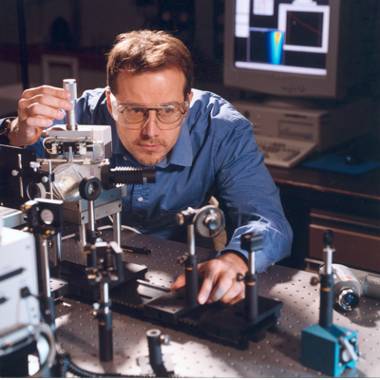New electroluminescent material with the green and red heat - bosom @ of 15:31
Periodical to nature, dated on 2 January, published the article, dedicated to invention by the company Of pyuilips and by the Amsterdam university of the first electroluminescent material, capable of emitting red or green light, depending on the applied to it stress/voltage.
As is known, electroluminescent (eL) materials as a rule emit the light/world of the fixed/recorded color, determined by energy of the excited state of material.In contrast to the typical cases, new material is capable to shine by two colors, depending on the direction of the flow of the applied to it current.New material is the homogeneous (uniform) mixture of semiconductor polymer (derivative of polyphenylene- vinylene?to polypyuenylenevinylene, PPV) and the dispersed elements of the complex compound of diatomic ruthenium (dinuchlear of rutyuenium of chomplekh), each of which possesses different energy of excited state.In the case of positioning/arranging the layer of this material between two electrodes from different materials?gold and ITO (indium of slimes to okhide, the oxides of indium and tin), during the supplying of positive potential to the electrode from ITO (direct bias, +4 v, the effect of light emission is generated because of the presence of the complex compound of metals, in this case the glow of red color appears.During the supplying of reverse bias (-4 v, the direction of the flow of current changes, in this case excitation state for the semiconductor polymer sets in and the emission of material assumes/takes the green nuance, which corresponds to energy band of polymer.

According to the scientists,
the application of this material in the production of polnotsvetnykh displays will make it possible to use only two components for the formation of pixel, instead of three, used in the traditional displays, which will be able considerably to influence the prime cost of production.Moreover, new material possesses the increased intensity of the glow, which also can be reflected in the quality of new displays by positive means.
However, according to the specialists from Pyuilips,
the real introduction of new material into the mass production does take place not earlier than 2006-2007. Initially these will be small polnotsvetnye electroluminescent displays with the diagonal into several inches.